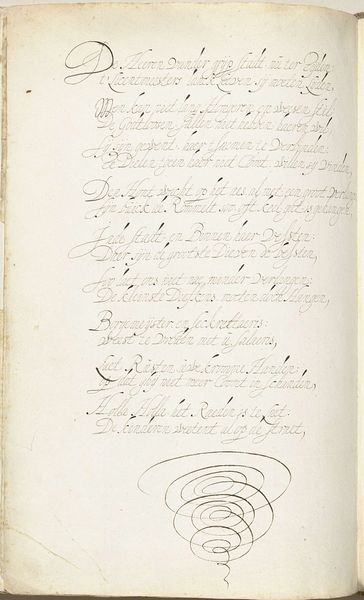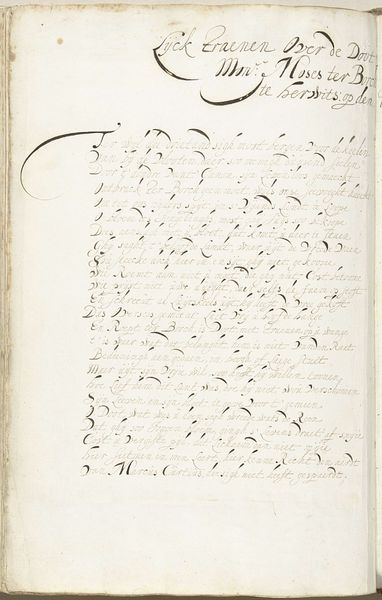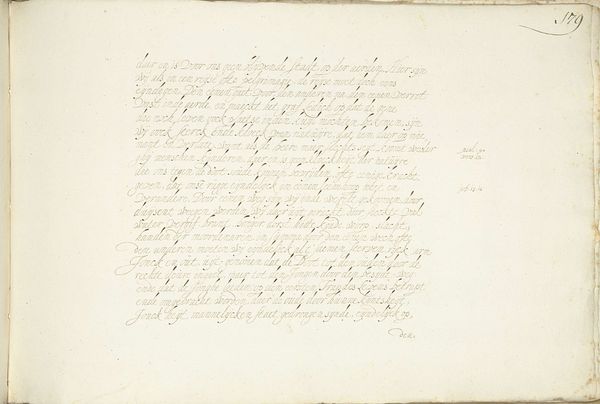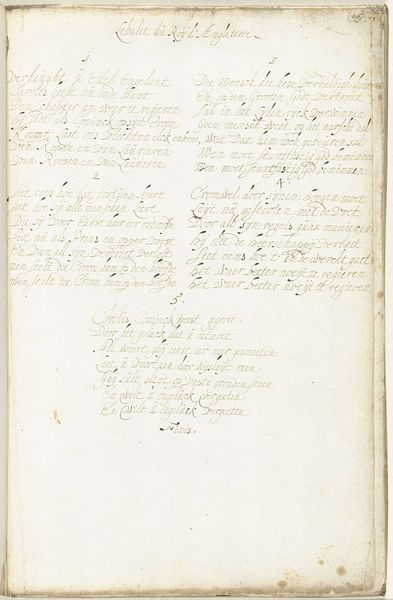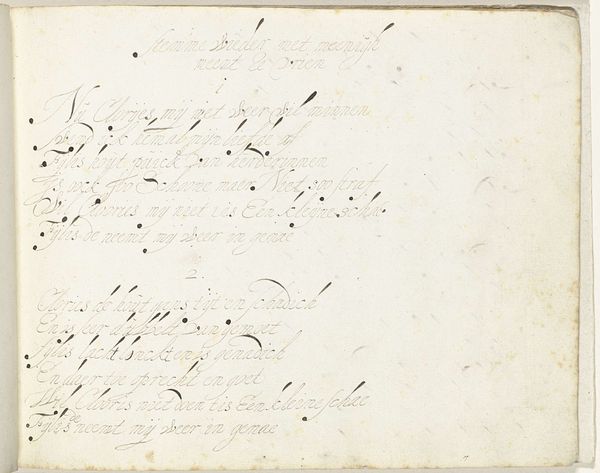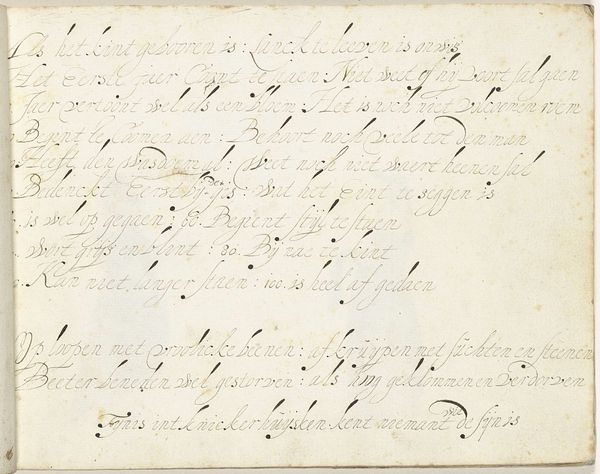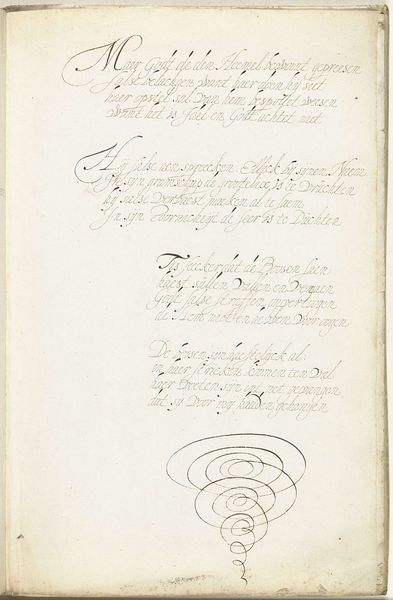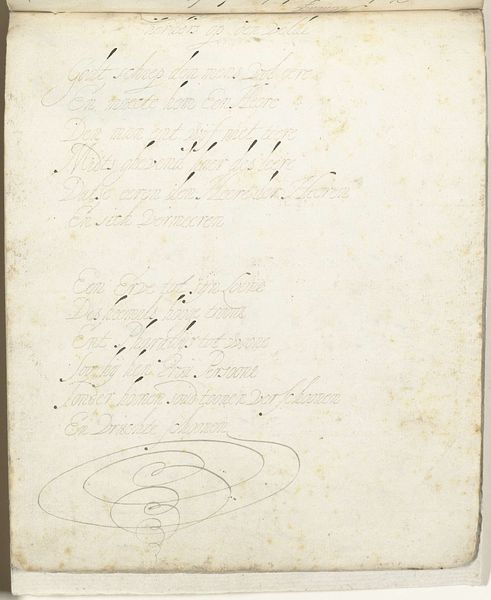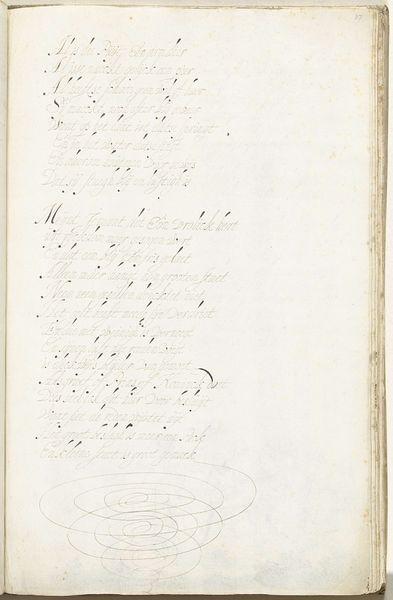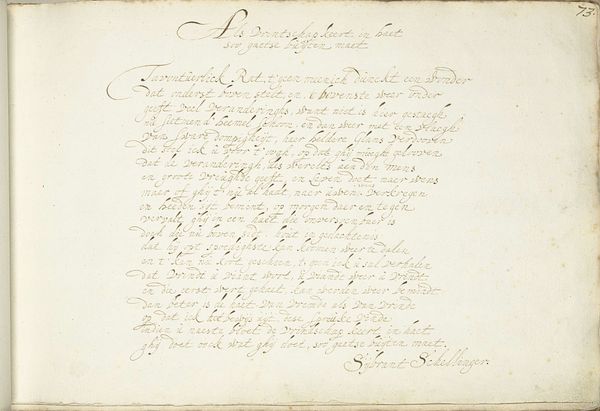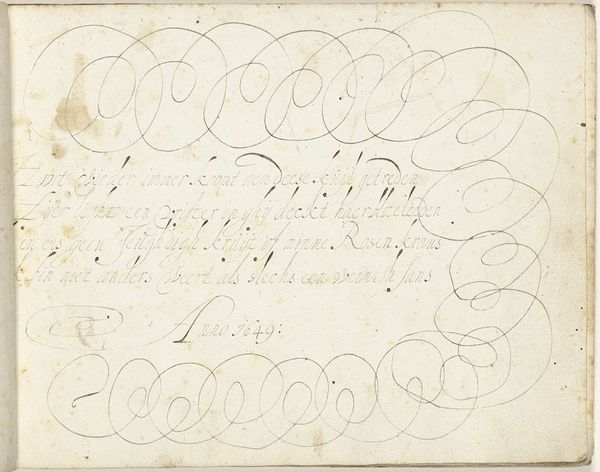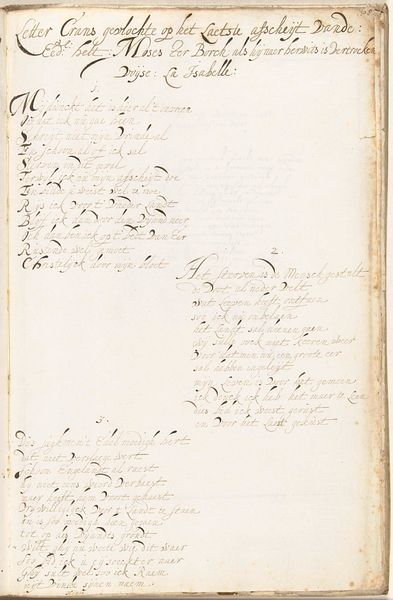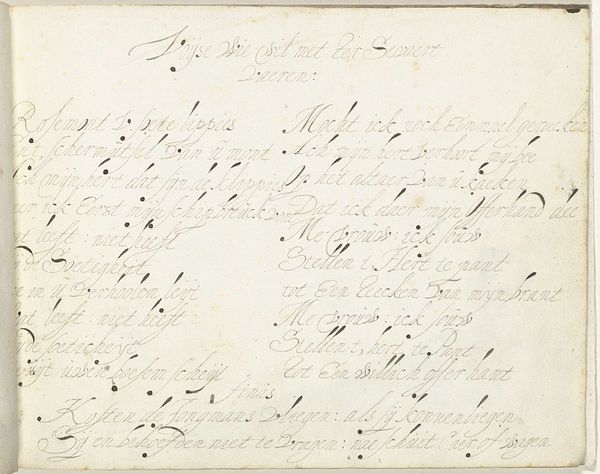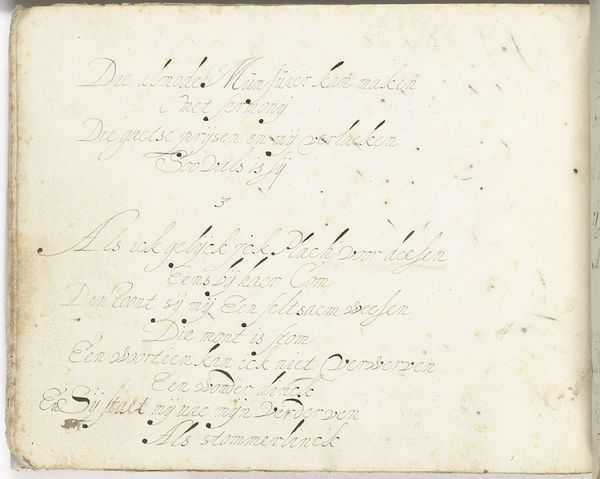
drawing, paper, ink
#
drawing
#
aged paper
#
hand-lettering
#
dutch-golden-age
#
hand drawn type
#
hand lettering
#
paper
#
personal sketchbook
#
ink
#
hand-drawn typeface
#
fading type
#
ink colored
#
sketchbook drawing
#
genre-painting
#
northern-renaissance
#
sketchbook art
#
calligraphy
Dimensions: height 243 mm, width 360 mm
Copyright: Rijks Museum: Open Domain
Curator: What strikes me immediately is the fading quality of the ink, almost as if the poem itself is vanishing. There’s something quite poignant about that visual effect. Editor: Indeed. We are looking at "Gelegenheidsgedicht over een uitstapje naar Hattem," a handwritten poem about a trip to Hattem created around 1661 by Gesina ter Borch. It's ink on paper and currently held at the Rijksmuseum. Ter Borch was known for her meticulous record-keeping and visual chronicles of daily life. Curator: The lettering is beautiful. The flourishes and the varied weight of the strokes suggest a confident, practiced hand. Was calligraphy typically associated with women at the time? I imagine access to education and artistic training would have been deeply stratified. Editor: Absolutely. Calligraphy, while seemingly decorative, played a critical role in both personal and political expression during the Dutch Golden Age. Literacy rates among women, though lower than men, were rising within certain social classes, allowing for a vibrant culture of female authorship. Ter Borch came from a family of artists and intellectuals who likely encouraged her talents. These skills weren't just about aesthetics, of course; handwriting directly connects to agency in communication. Curator: So, considering it within the context of family and female artistic circles shifts it from just a charming, antiquated poem into something potentially subversive. Do you see any thematic currents in her poem? Editor: While seemingly a lighthearted account of an excursion, consider the broader significance of women documenting their experiences at a time when their voices were often marginalized. Travel itself became a form of social commentary, a space to challenge conventions or subtly critique prevailing societal attitudes. Perhaps what reads to us as just a poem may be rooted in personal and social meaning from ter Borch's lived experience as a woman and an artist. Curator: I never looked at calligraphy as social practice before, rather as a formal aspect of this drawing. Now I consider its intersection with the maker’s life, opening exciting possibilities of interpreting artworks through biography and feminism. Editor: Exactly. Context is key to unlocking such histories and seeing how political ideologies are woven into the seemingly innocuous.
Comments
No comments
Be the first to comment and join the conversation on the ultimate creative platform.
